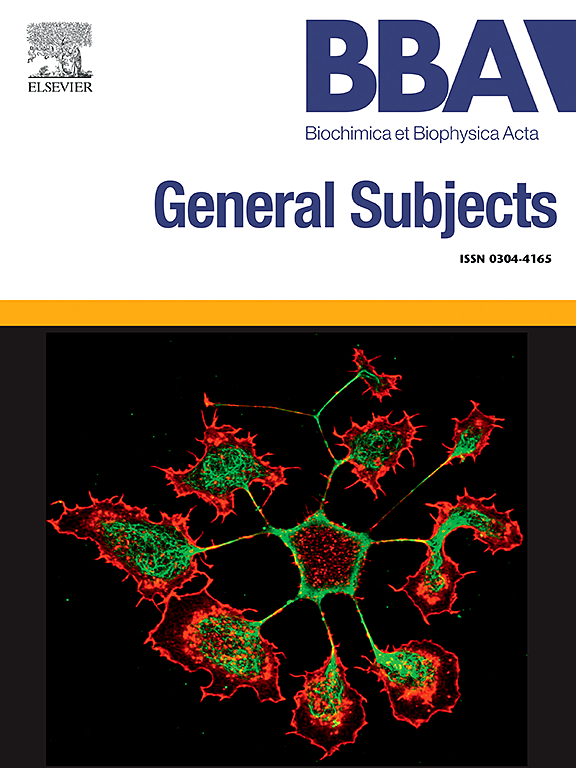作为疾病生物标志物的个性化生物传感器:挑战与机遇。
IF 2.8
3区 生物学
Q3 BIOCHEMISTRY & MOLECULAR BIOLOGY
Biochimica et biophysica acta. General subjects
Pub Date : 2024-10-18
DOI:10.1016/j.bbagen.2024.130724
引用次数: 0
摘要
众所周知,当纳米粒子与生物液体相互作用时,会在其上形成一层蛋白质和生物成分层。这一层可能会改变纳米材料的生物学命运和效率。最近的研究表明,疾病状态对生物冠层(有时称为 "个性化蛋白质冠层")的结构有重大影响。疾病等生理因素会影响蛋白质组和代谢组模式,导致蛋白质构象发生变化,从而在生物电晕装饰中产生这种辨别结构。提高精确平台的效率,为准确诊断疾病开发新的分子生物标志物是非常必要的。生物电晕图案的辨别力可以作为设计生物传感器的诊断工具。因此,在这篇综述中,我们总结了有关生理条件与影响纳米系统生物反应的各种生物电晕模式之间关系的最新研究。生物电晕模式的灵活性可能会为我们提供新的研究方向,并可利用它创造出适合特定生理情况的基于纳米粒子的治疗和诊断产品。本文章由计算机程序翻译,如有差异,请以英文原文为准。

Personalized biocorona as disease biomarker: The challenges and opportunities
It is well known that when nanoparticles interact with biological fluids, a layer of proteins and biological components forms on them. This layer may alter the biological fate and efficiency of the nanomaterial. Recent studies have shown that illness states have a major impact on the structure of the biocorona, sometimes referred to as the “personalized protein corona.” Physiological factors like illness, which impact the proteome and metabolome pattern and result in conformational changes in proteins, give rise to this structure of discrimination in biocorona decoration. Improving the efficiency of precise platforms for developing new molecular biomarkers for accurate illness diagnosis is vitally necessary. The biocorona pattern's discrimination may be a diagnostic tool for designing biosensors. As a result, in this review, we summarize the most current studies on the relationship between physiological conditions and the variety of biocorona patterns that influence the biological responses of nanosystems. The biocorona pattern's flexibility may provide new research directions and be utilized to create nanoparticle-based therapeutic and diagnostic products suited to certain physiological situations.
求助全文
通过发布文献求助,成功后即可免费获取论文全文。
去求助
来源期刊

Biochimica et biophysica acta. General subjects
生物-生化与分子生物学
CiteScore
6.40
自引率
0.00%
发文量
139
审稿时长
30 days
期刊介绍:
BBA General Subjects accepts for submission either original, hypothesis-driven studies or reviews covering subjects in biochemistry and biophysics that are considered to have general interest for a wide audience. Manuscripts with interdisciplinary approaches are especially encouraged.
 求助内容:
求助内容: 应助结果提醒方式:
应助结果提醒方式:


